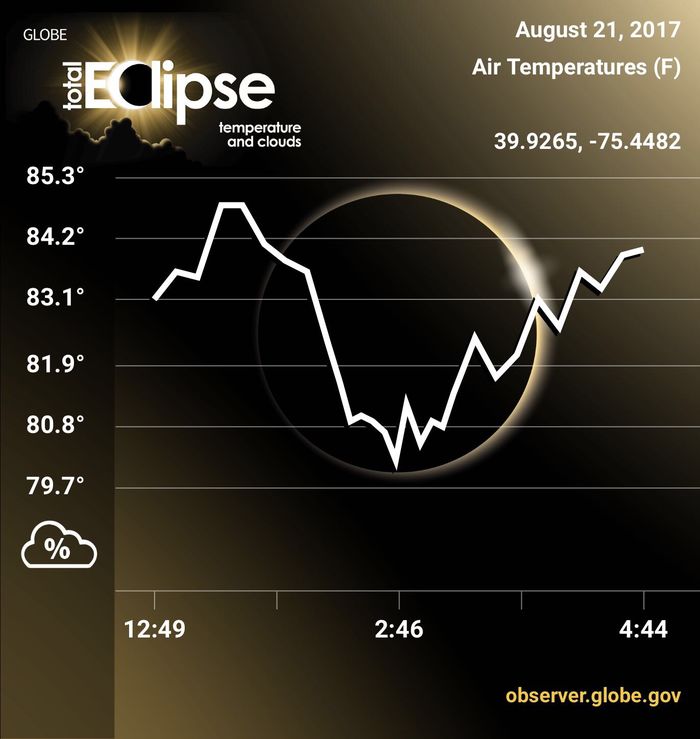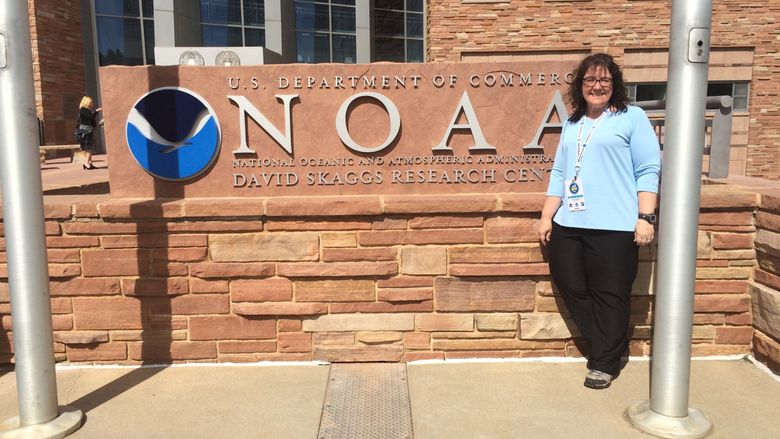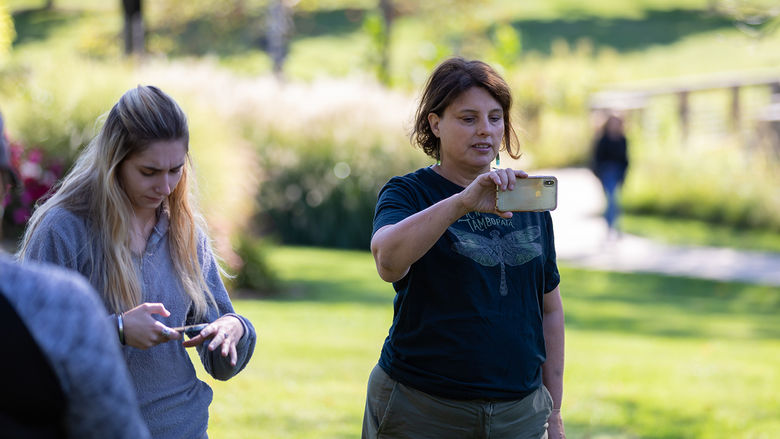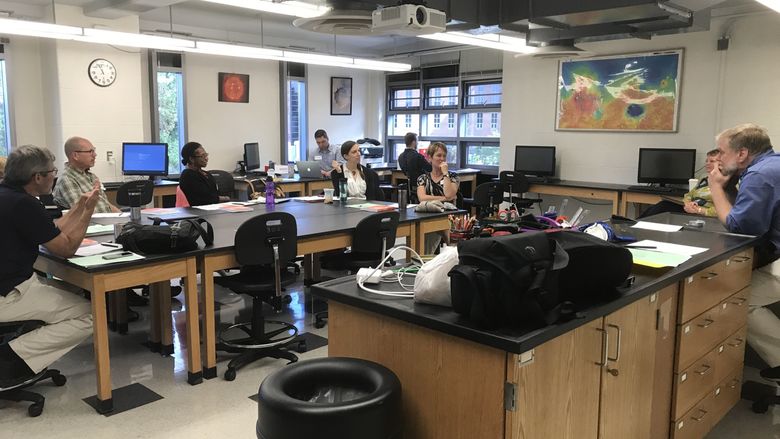MEDIA, Pa. — The total eclipse on Aug. 21 sent faculty, staff and students from around the state outside to watch the action. While most of the Penn State community had their eyes on the skies, two people at Penn State Brandywine were thinking about the ground and air around them.
Professor of Earth Sciences Laura Guertin took on a project spearheaded by the National Aeronautics and Space Administration (NASA). The project tracked ground and air temperatures at various locations in the United States before, during and after the eclipse.
Data will be analyzed and used by students and faculty on campus to understand the impacts of the eclipse on the local environment. It also has been submitted to NASA for the organization’s database.
Guertin, a major advocate of student involvement in research, enlisted first-year student Gabe Schaefer to work with her on the NASA project.
“I was excited to get involved with research as a freshman,” Schaefer said. “It’s a great way to get an early idea of what the process looks like.”
Together, Guertin and Schaefer monitored the air and ground temperature on campus the day before the eclipse, during the eclipse and immediately afterward.
“An hour before the eclipse, it was 84 degrees outside,” said Schaefer. “Totality was at 2:43 p.m., and by then it was 79 degrees. It was a very sudden decrease in temperature — but after the eclipse, the temperature increased much more gradually. It was interesting.”
The data from Brandywine will be compared with similar studies from across the country to see how totality — the amount of sun exposure covered by the eclipse — affected temperature changes.
“Brandywine saw 75 percent totality,” Schaefer said. “We’re comparing that with areas that were in complete totality, like Oregon and South Carolina. There were also hubs in places like Maine and California, which had different totality levels, doing the same research.”
Although Guertin and Schaefer have wrapped up their data collection for NASA, they have now turned their sights toward another outlet for their labors. Schaefer will be presenting their research at the American Geophysical Union Virtual Poster Showcase — an international conference.
“It’s rare to see a new student so eager and ready to jump into undergraduate research,” Guertin said. “Gabe took advantage of this opportunity without hesitation — and now, before the end of his first semester, he will be presenting his research at an international conference.”
After college, Schaefer plans to find work in the research and development of alternate fuels and technologies. He looks forward to applying his research in new arenas and credits his newfound passion for research to Guertin’s encouragement and guidance.
“Dr. Guertin has helped me a lot,” he said. “Because of this project, I have a much better sense of how research works and what it requires of me.”




